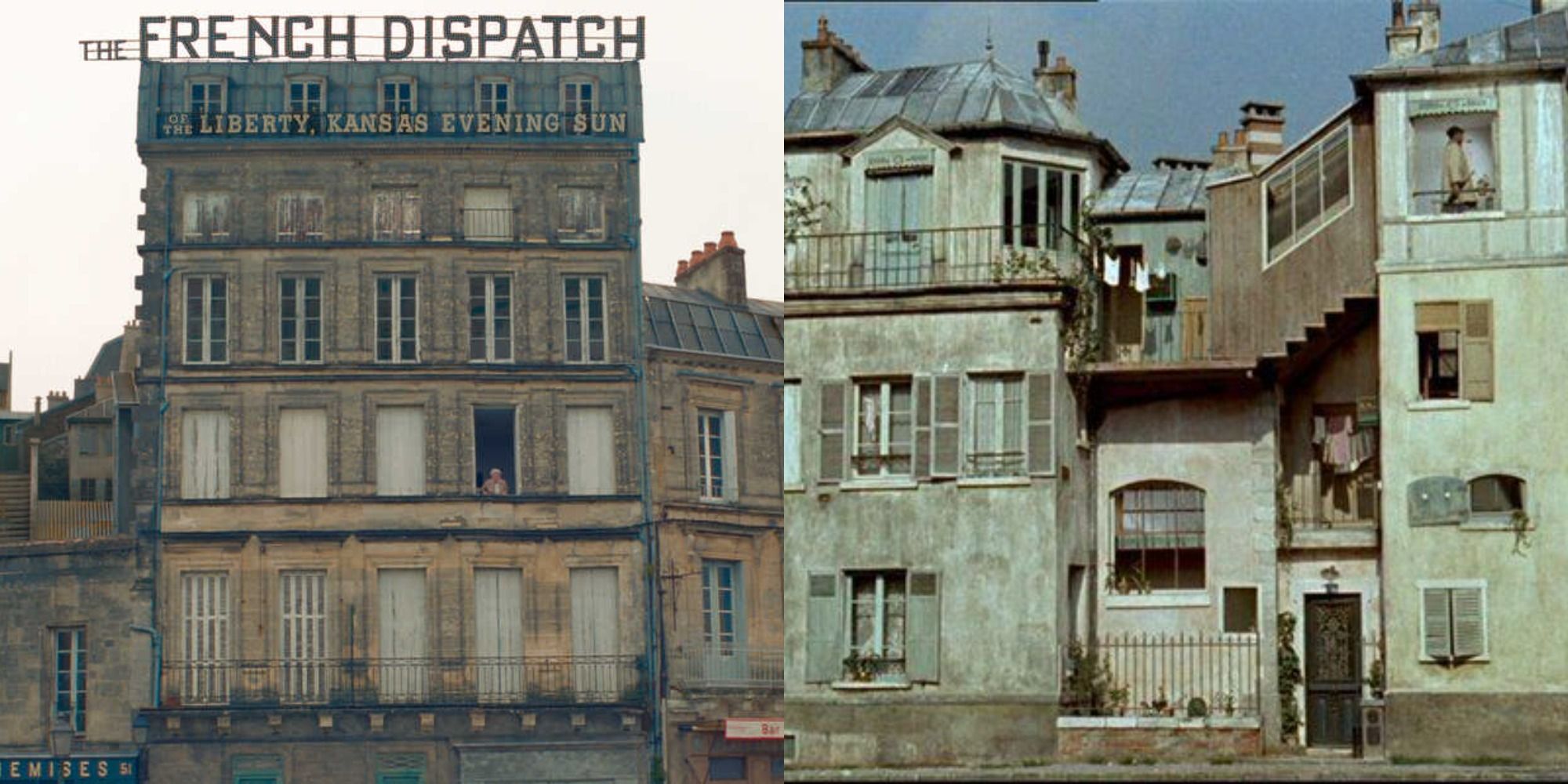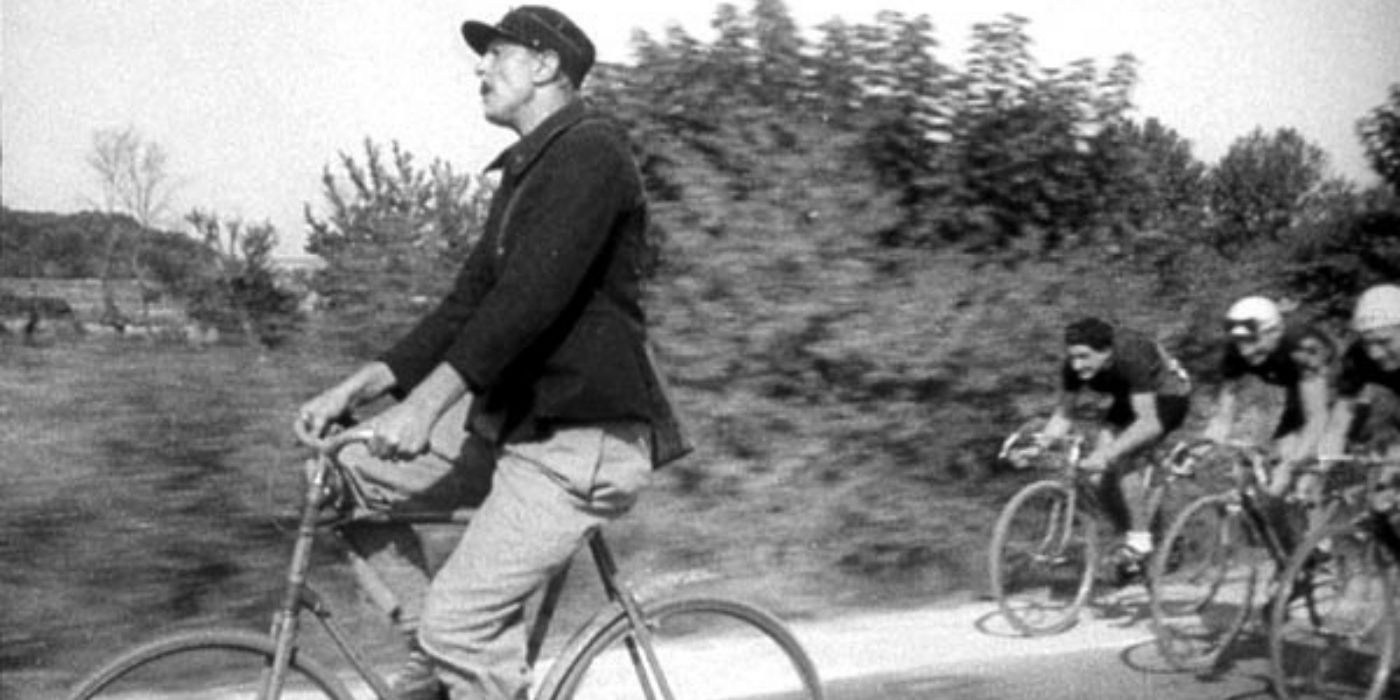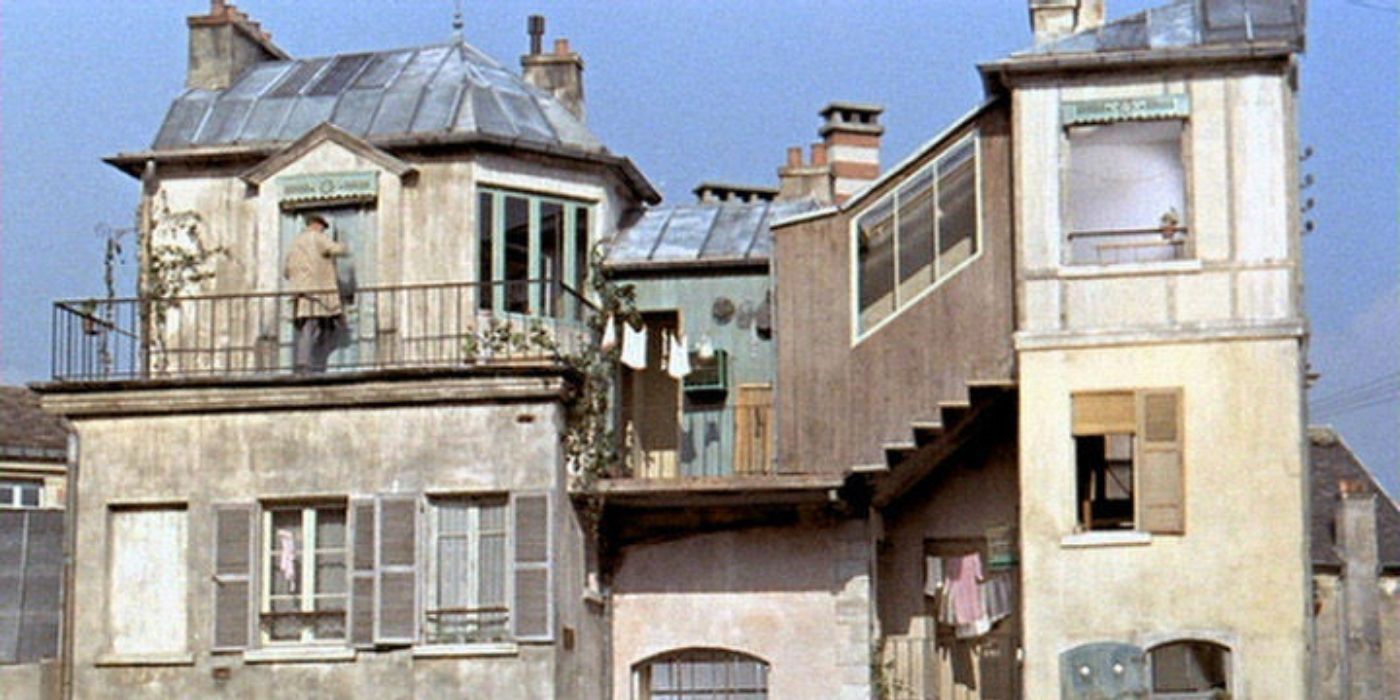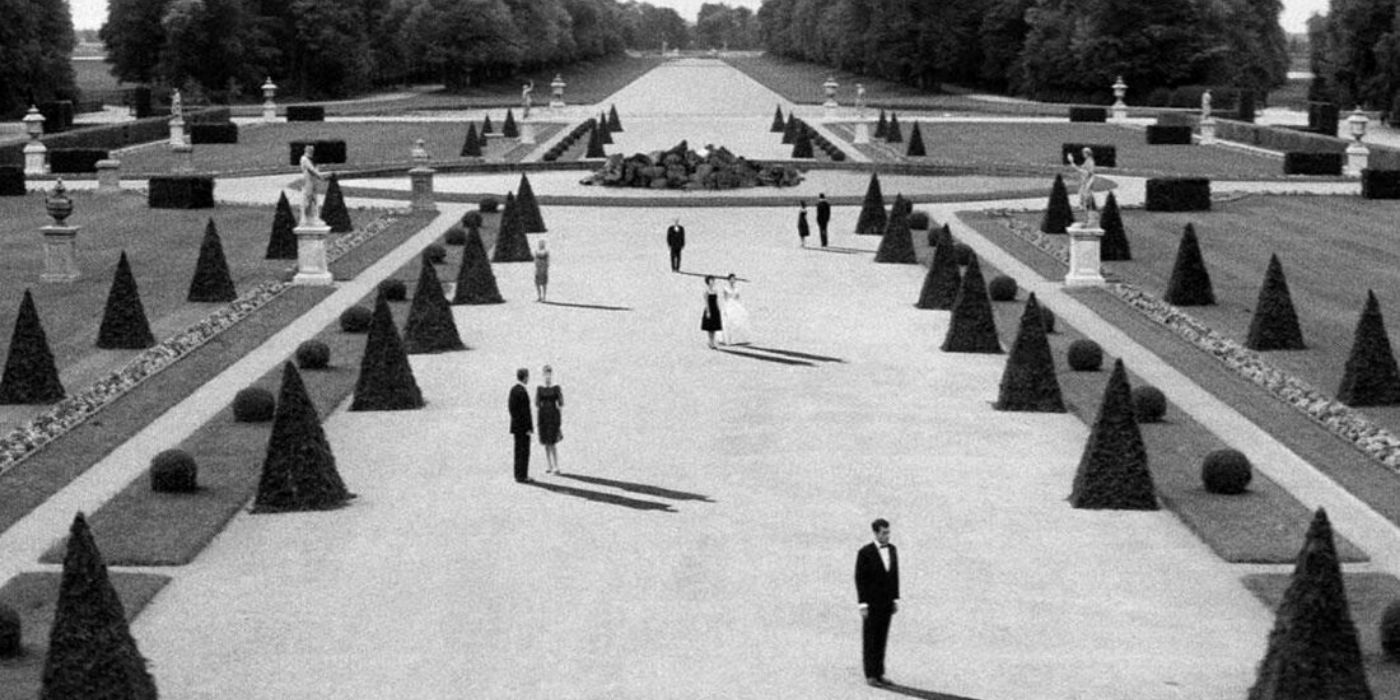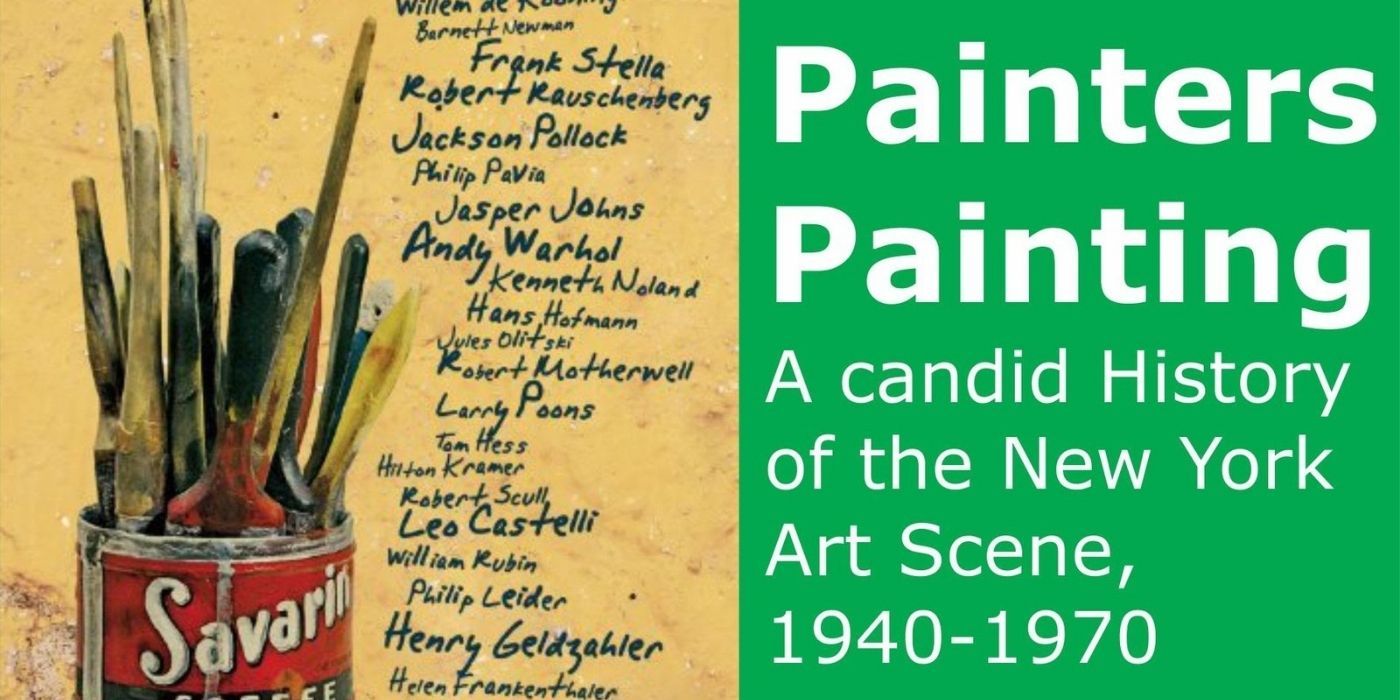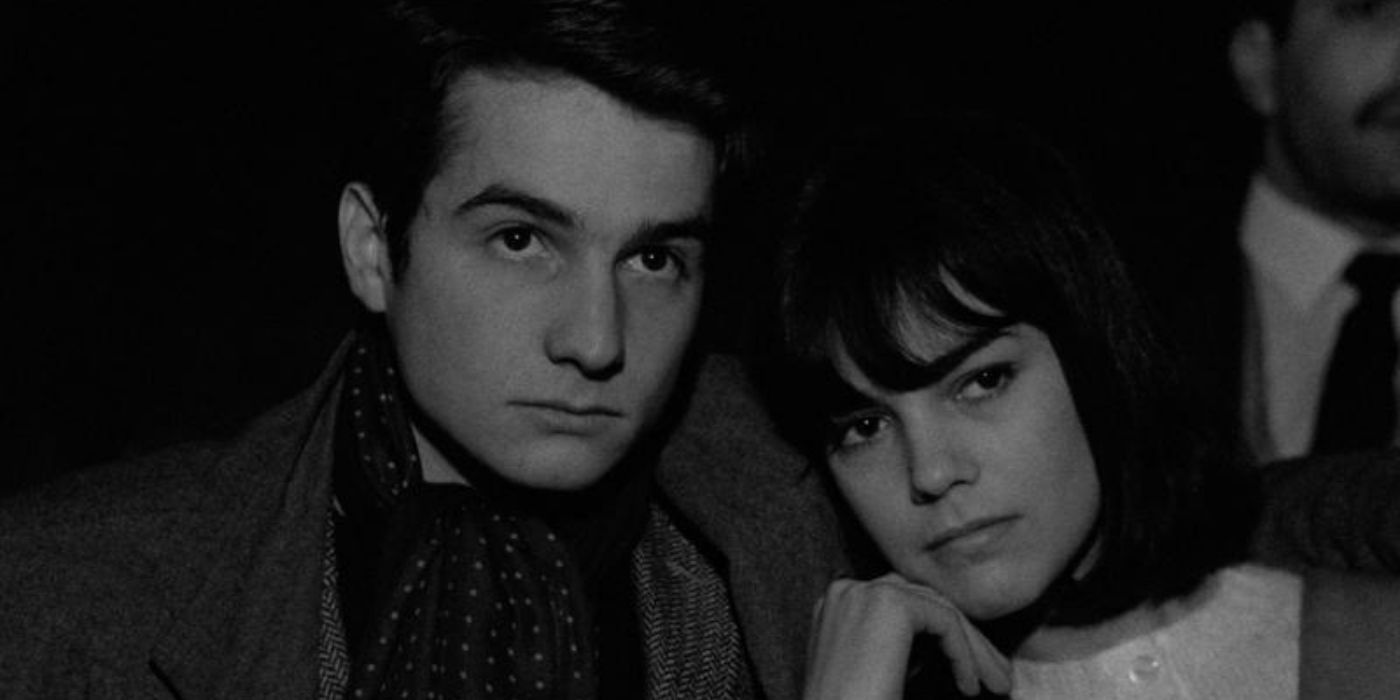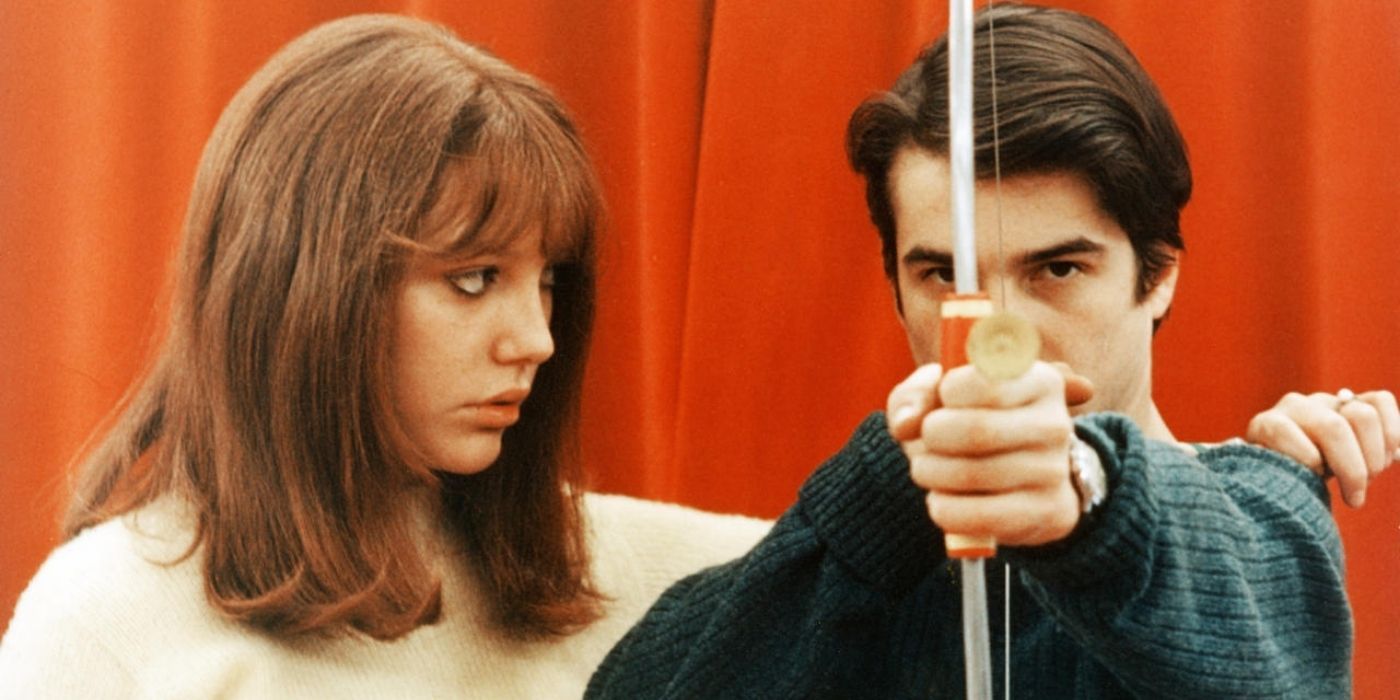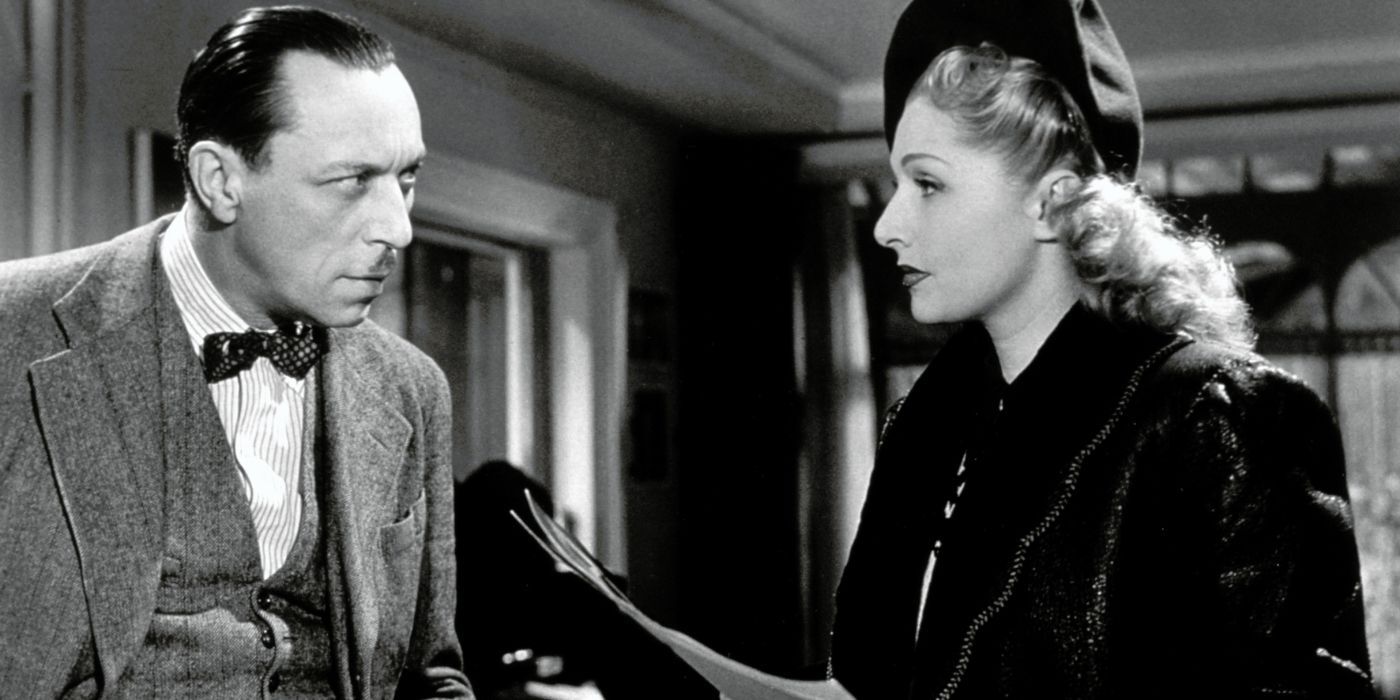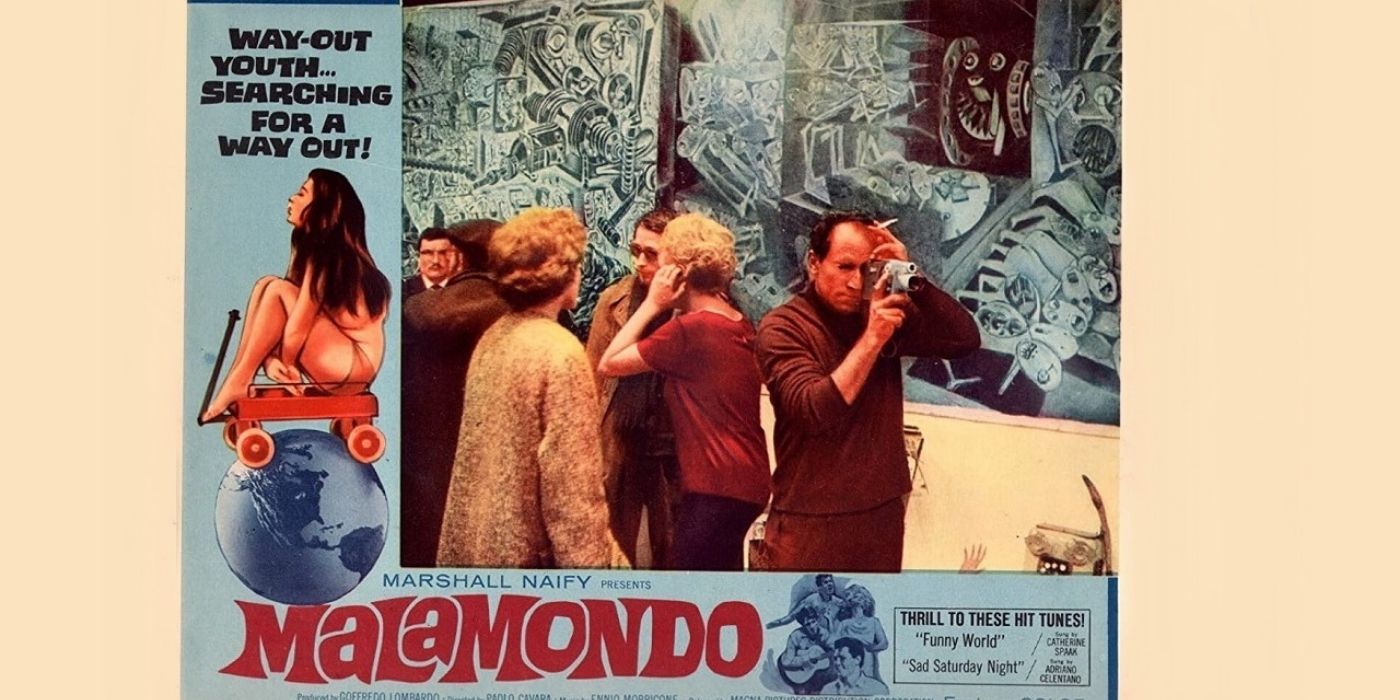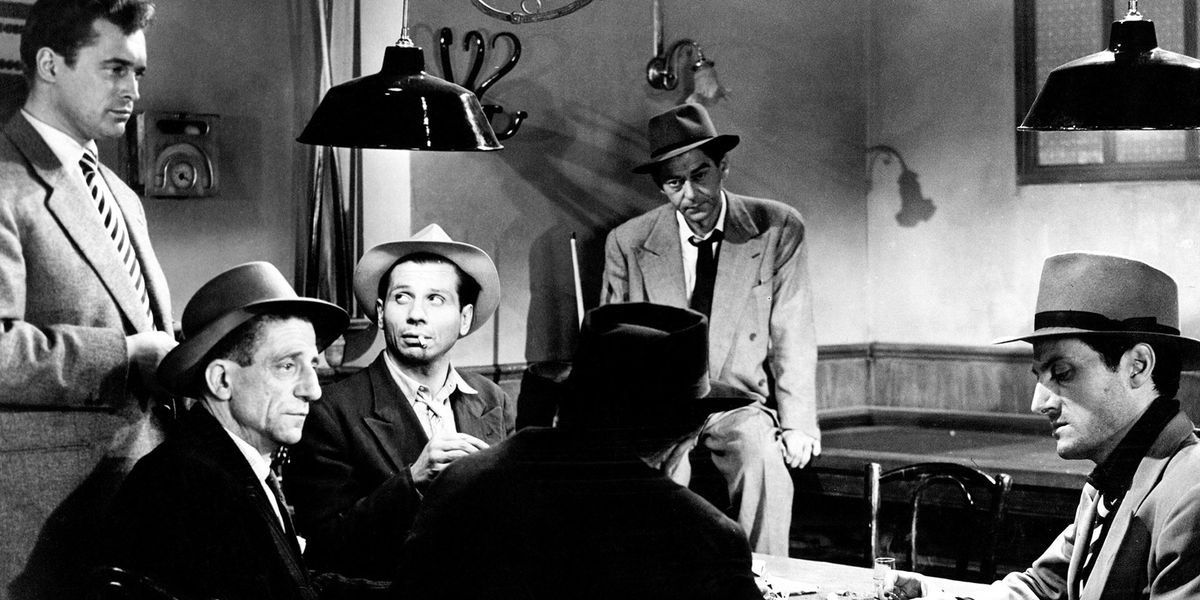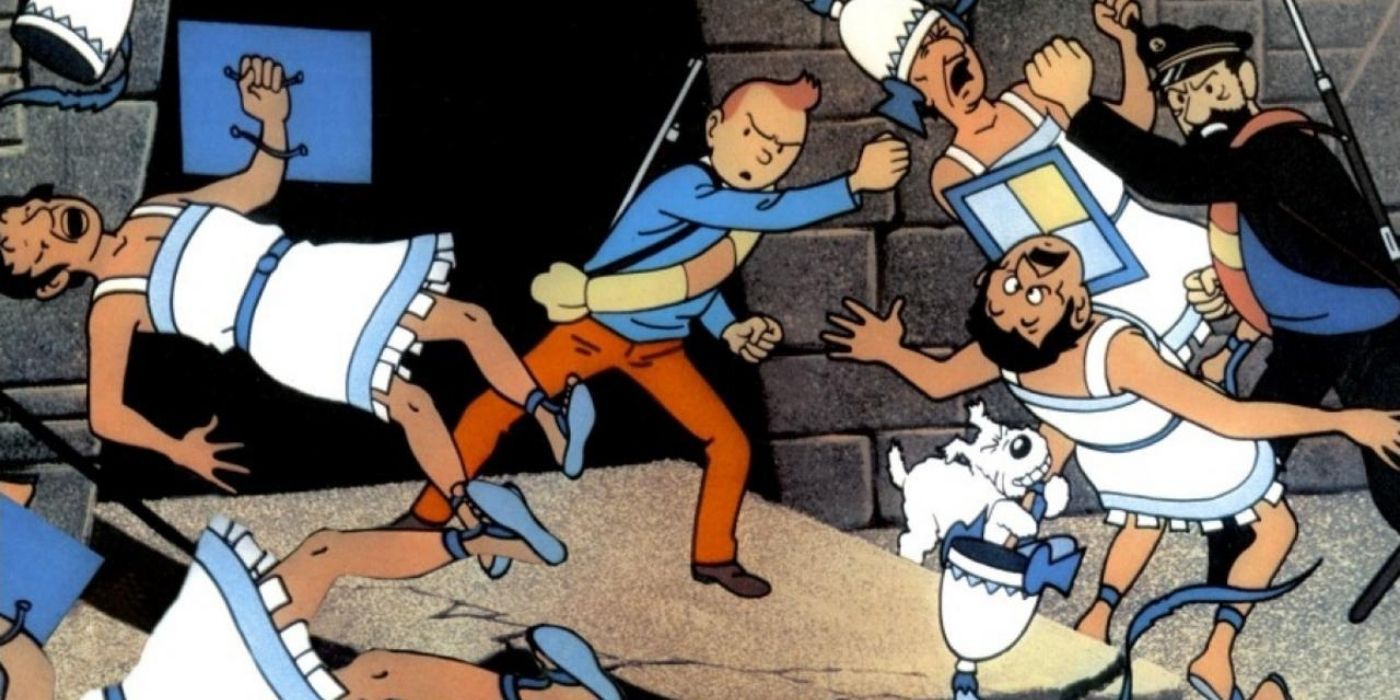Wes Anderson's tenth and most recent theatrical outing, The French Dispatch, has finally been released after a year-long delay due to the COVID-19 pandemic. At its core, the film is a love letter to writers and the art of writing and journalism, but it's also a tribute to classic French and European cinema.
It has all the trademark quirks of a typical Anderson film, but it is also loaded with several references to other films from both the classic and new wave eras. Some of these references are more obvious in their execution, placed front and center, while others are much more subtle and kept in the background.
Jour De Fete (1949)
In the beginning of the film, the magazine has its first article, "The Cycling Reporter", which holds a few noticeable similarities to Jour de Fete, a film by French filmmaker Jacques Tati. While there aren't any direct references to Tati's film, it's rather clear just how much of an influence it must have had on the segment.
As the article's writer, Herbsaint Sazerac, cycles around the town of Ennui in Anderson's film, those who have seen Tati's might be reminded of Jour de Fete's lead character, a village postman who also rides a bike while making deliveries. Between their on-point comedic timing and the few undeniably similar traits of the two characters, the minutes-long opening segment of The French Dispatch has much in common with the entirety of Tati's classic.
Mon Oncle (1958)
In another film from Jaques Tati, Mon Oncle, the beginning features an exterior shot of a building as the lead character is seen through the open windows making his way up the stairs. This same shot is replicated at the start of The French Dispatch, as a waiter is seen carrying drinks up the stairs of a very similar-looking building.
Both Anderson and Tati have unique and eccentric film-making styles, and it's interesting to see one pay tribute to another who must have really made an impact on his work. This reference is much more obvious and direct compared to the others made throughout the film, and it's details like this that show both Anderson's love of European cinema and his willingness to go the extra mile to express it.
Last Year At Marienbad (1961)
One of the biggest standout visuals of Anderson's film occurs during the first main story, "The Concrete Masterpiece". It's a scene where all its characters, in a chaotic frenzy, freeze mid-motion, creating a tableau, as the camera pans across the room. This is a reference to a similarly done tableau in Alain Resnais' Last Year in Marienbad.
The similar visuals in both scenes are simplistically beautiful, but Anderson's is much more elaborate. His actors maintain their aggressive expressions throughout the shot, and practical effects are used to make it seem like thrown objects are actually frozen in mid-air. Any director in the modern age would've taken the easy way out by doing it digitally, but Anderson's and Resnais' old-fashioned sensibilities are far more impressive.
Painters Painting: The New York Art Scene 1940-1970 (1972)
Looking at "The Concrete Masterpiece" and Emile de Antonio's 1972 documentary film, Painters Painting, the visual similarities between the two are quite staggering. The first main story of Anderson's film may have a more complex narrative (with J.K.L's lecture giving a more documentary-esque feel to it), while Painters Painting is more simplistic in its approach, but their visual resemblances aren't easy to overlook.
Not only do both the documentary and "The Concrete Masterpiece" center around the arts and painting, but they both also feature Anderson's trademark symmetrical framing and continuously switch back and forth between color and black and white. Painters Painting seems to be one of the more forgotten documentary films of the 1970s, but the influence it appears to have had on The French Dispatch may give it a new legacy.
Masculin Feminin (1966)
In the second main story of Anderson's film, "The Revisions of a Manifesto", includes not just one, but two direct references to the classic Jean-Luc Godard new wave drama, Masculin Feminin. Not only is the song "Tu m'as trop menti" from Godard's film played during the segment, but the relationship between Anderson's characters, Zeffirelli and Juliette, is at times very much reminiscent of the relationship between Godard's two leads, Paul and Madeleine.
Given the songs featured in Anderson's previous films like Rushmore and The Royal Tenenbaums, it's no surprise that his vast taste in music would also include songs from 1960's French film soundtracks. Not only is the on-screen chemistry between Zeffirelli and Juliette just as charming to watch as Paul and Madeleine, but the ill-fated nature of both romances is equally upsetting.
La Chinoise (1967)
Another Jean-Luc Godard film that heavily influenced "Revisions of a Manifesto" is La Chinoise. Both Godard's film and Anderson's second segment involve political themes and focus on young activists in the center of a revolution.
While the influence it had on The French Dispatch is obvious, La Chinoise is much different in its tone as a serious political drama with a clear message. "Revisions of a Manifesto" on the other hand, manages to be completely non-political while still being heavy on politics. Anderson mostly uses the political uprising and revolt for laughs and humor, while Godard treated the subject much more seriously.
Quai Des Orfevres (1947)
In the third and final story of The French Dispatch, "The Private Dining Room of the Police Commissioner", what starts off as an article by Roebuck Wright about a chef's meal in a prison kitchen suddenly becomes an off-the-wall story involving the kidnapping of the commissioner's son with gunfire, a car chase, and explosion. The aforementioned commissioner is seemingly based upon the lead character of Inspector Antoine in Henri-Georges Clouzot's Quai des Orfevres.
Given how undeniably uncanny the two characters are in their physical appearances and mannerisms, along with how they are both high-ranking members of the police force, there's almost no way that their similarities could be a coincidence. Going so far as to make one of his characters a near carbon copy of another character from another film, Anderson creates a quirky and loving tribute to just one of many films that served as an influence on his own.
I, Malamondo (1964)
Anderson gives himself another chance to show off his musical taste and knowledge while referencing the 1964 documentary, I, Malamondo, with the song "The Last Time" by Ennio Morricone.
The song is played during a scene in "Revisions of a Manifesto", but it was also featured heavily during the film's trailers and TV promos. The song is not only a classic from Morricone, but it fits the tone of Anderson's film and his overall style of filmmaking like a glove.
Rififi (1955)
One film that appears to have one of the biggest influences on The French Dispatch, especially during "The Private Dining Room of the Police Commissioner", is the classic 1955 Jules Dason film, Rififi. While no direct reference to Dason's film is made during the segment, its influence and spirit hang in the air.
Both Dason's film and the third segment of Anderson's are crime stories, with the former revolving around a heist and the latter revolving around a kidnap and rescue. While they may be different in tone, with Anderson's being much more comedic, the way they both present the crimes taking place creates a fair amount of tension.
Tintin And The Temple Of The Sun (1969)
One of the most memorable moments of Anderson's film occurs during the climax of the final story. The film suddenly switches from lie-action to an animated style reminiscent of a cartoon from The New Yorker or Tintin and the Temple of the Sun, based on Herge's Tintin comics, as a humorous and exhilarating car chase ensues.
The animation is an unexpected but welcome change of pace, if only for a few short minutes. Again, no direct reference to Tintin is made, but it manages to capture the same charm and simplicity of its visuals while being slightly more detailed for it to stand out as its own thing.

